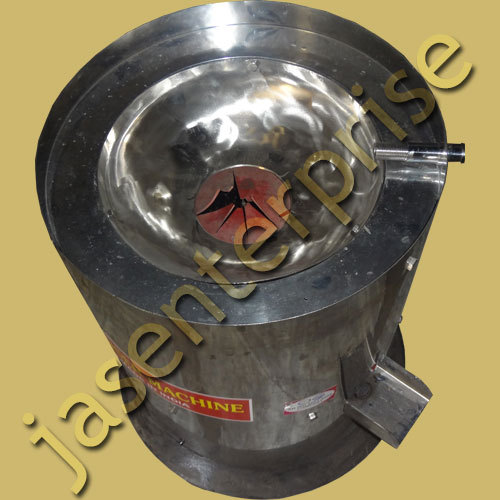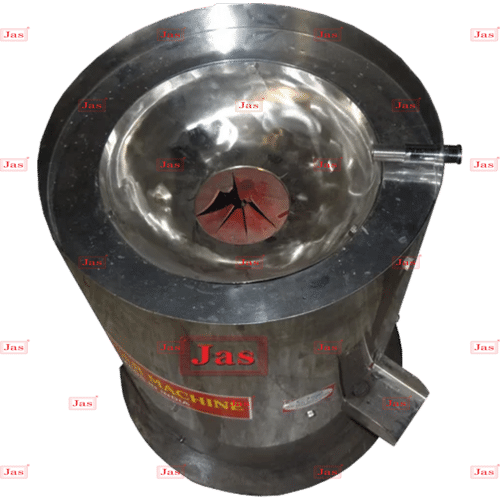Waste Shredder
Price 29000 INR/ Unit
MOQ : 1 Unit
Waste Shredder Specification
- Product Type
- Waste Shredder
- Disposer Type
- Industrial Waste Shredder
- Grinding Chamber Material
- Mild Steel
- Capacity
- 400 Kg/hr
- Speed
- 1440 RPM
- Power
- 3 HP
- Frequency (MHz)
- 50-60 Hertz (HZ)
- Voltage
- 230 Volt (v)
- Width
- 850 mm
- Height
- 1200 mm
- Length
- 1100 mm
- Color
- Green and Black
Waste Shredder Trade Information
- Minimum Order Quantity
- 1 Unit
- Payment Terms
- Cash Against Delivery (CAD), Cash Advance (CA), Cash in Advance (CID), Cheque, Western Union
- Main Export Market(s)
- Asia, Australia, Central America, North America, South America, Eastern Europe, Western Europe, Middle East, Africa
- Main Domestic Market
- All India, South India, Central India, West India, North India, East India, Gujarat, Karnataka, Kerala, Lakshadweep, Mizoram, Meghalaya, Manipur, Andhra Pradesh, Bihar, Chandigarh, Daman and Diu, Goa, Jharkhand, Odisha, Punjab, Assam, Delhi, Dadra and Nagar Haveli, Andaman and Nicobar Islands, Arunachal Pradesh, Chhattisgarh, Haryana, Himachal Pradesh, Jammu and Kashmir, Madhya Pradesh, Maharashtra, Nagaland, Rajasthan, Sikkim, Tamil Nadu, Telangana, Tripura, Pondicherry, Uttar Pradesh, Uttarakhand, West Bengal
- Certifications
- ISO
About Waste Shredder
How It Works
- Loading: Food scraps, leftovers, and organic waste are loaded into the shredder.
- Shredding Process: The machine uses sharp blades or grinding mechanisms to break down the food into smaller pieces. This helps in reducing the volume of waste and makes it easier to handle.
- Output: The shredded food waste can then be composted, used for animal feed, or processed further depending on the type of shredder and its intended use.
Types of Food Waste Shredders
- Residential Shredders: Usually smaller, these are designed for home use and can be installed in the kitchen sink (garbage disposals) or as standalone units.
- Commercial Shredders: Larger and more robust, these are used in restaurants, hotels, and other food service operations to handle high volumes of waste.
Benefits
- Reduces Volume: Shredding reduces the size of food waste, which can help with easier disposal or composting.
- Improves Composting: Smaller pieces of food waste break down faster in composting systems.
- Reduces Odors: By processing food scraps quickly, the shredder helps to reduce odors associated with decomposing waste.
- Eco-Friendly: Helps divert food waste from landfills and promotes recycling and composting.
Premium Construction for Durability
Equipped with high carbon steel blades and a mild steel grinding chamber, this waste shredder promises longevity and reliability under continuous operation. The robust build allows for processing a wide range of waste materials while maintaining operational efficiency and minimal wear.
User-Friendly and Safe Operation
The shredders control panel is designed for intuitive use, featuring push-button controls. Safety is prioritized through features such as emergency stops, overload protection, and electrical protection rated to IP55, making it safe for continuous use in industrial settings.
Mobility and Versatility
Thanks to its sturdy wheels, this shredder can be easily moved as required within your facility. It accommodates a variety of waste streamsincluding organic and plasticmaking it a versatile choice for industries and businesses focusing on waste management.
FAQs of Waste Shredder:
Q: How does the waste shredder handle different types of waste materials?
A: This shredder is designed to process a variety of materials, including organic matter, plastics, and general waste. The high carbon steel blades and adjustable output size make it adaptable for different waste processing requirements.Q: What safety features are included for operator protection?
A: The shredder is fitted with emergency stop functionality, overload protection, and IP55-grade electrical protection to ensure safe and reliable operation during use.Q: When should the blades be checked or replaced?
A: Blades should be inspected regularly based on usage intensity. For optimal performance, it is advisable to check the blades after every significant operation cycle or if a decrease in shredding efficiency is noticed.Q: Where can the waste shredder be installed for optimal use?
A: This shredder is suited for installation in industrial or municipal waste management facilities. Its IP55 protection and mobility allow it to operate efficiently indoors or within sheltered outdoor environments.Q: What is the standard process for operating the shredder?
A: Operation involves loading material into the 500 mm x 500 mm feeding hopper, selecting the desired output size, and activating the machine via the push-button panel. Built-in safety features automatically monitor for potential issues during processing.Q: How does the mobility feature benefit users?
A: The integrated wheels make it easy to reposition the shredder as necessary within your facility, enhancing flexibility and operational convenience without needing additional equipment.Q: What advantages does the three-phase induction motor provide?
A: The three-phase induction motor ensures powerful, energy-efficient performance while maintaining a consistent operational speed of 1440 RPM, resulting in efficient waste reduction and extended equipment lifespan.
Tell us about your requirement

Price:
Quantity
Select Unit
- 50
- 100
- 200
- 250
- 500
- 1000+
Additional detail
Mobile number
Email
More Products in Food Waste Disposer Category
Food Waste Disposer Machine
Price 5000 INR / Piece
Minimum Order Quantity : 1 Piece
Capacity : 1200 ml
Voltage : 220240 V
Frequency (MHz) : 50 Hz
Length : 185 mm
Food Waste Grinder
Price 30000 INR / Unit
Minimum Order Quantity : 1 Unit
Capacity : 400 Kg/hr
Voltage : 230/440 Volt (v)
Frequency (MHz) : 5060 Hertz (HZ)

 Send Inquiry
Send Inquiry




 Send Inquiry
Send Inquiry Send SMS
Send SMS Call Me Free
Call Me Free